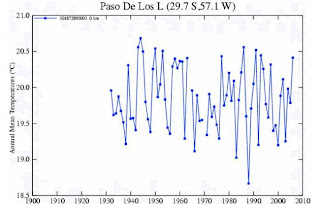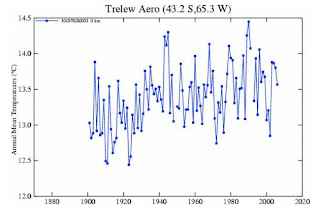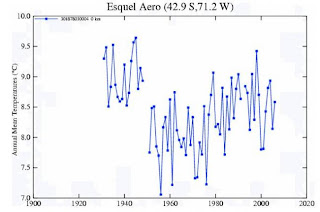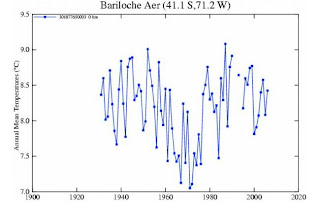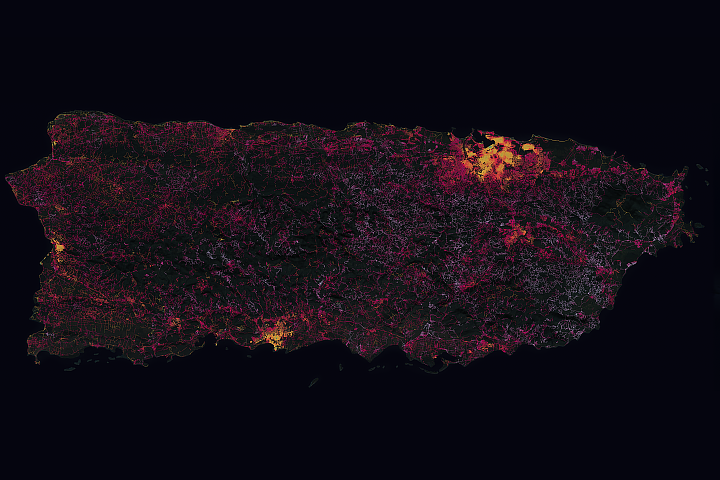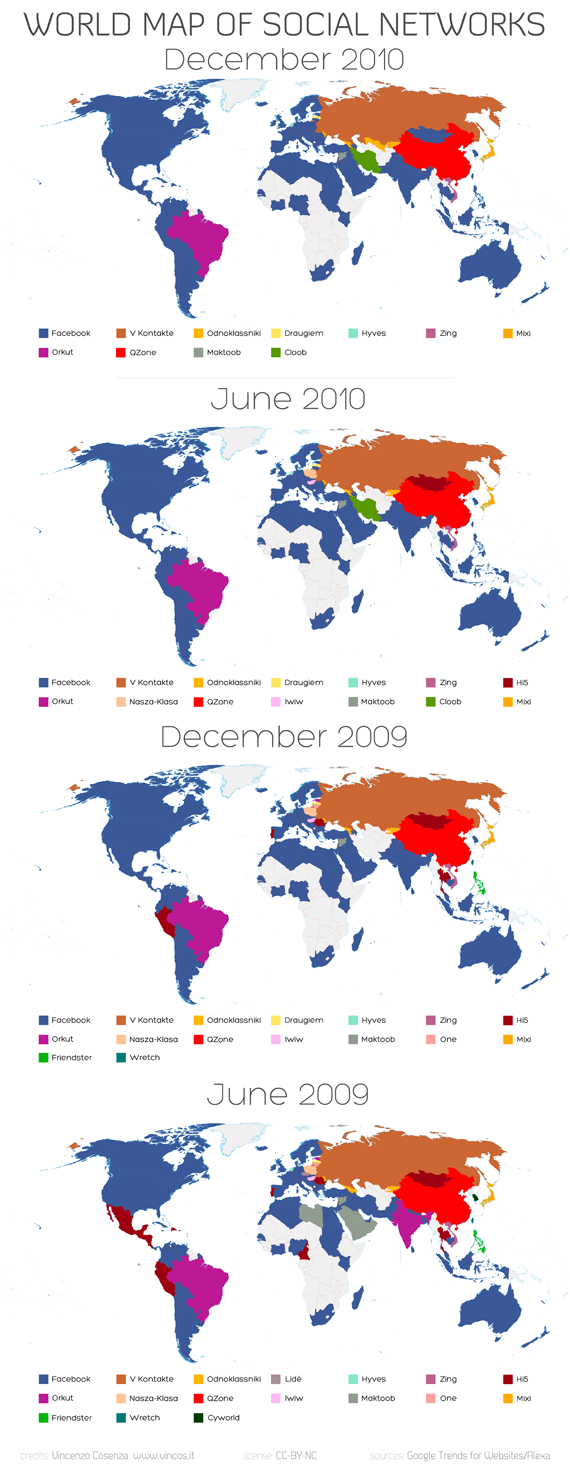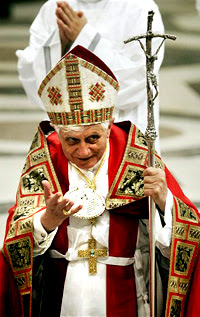
PATRIOT PERSPECTIVE
Joseph Alois Ratzinger became the 265th Pope of the Roman Catholic Church on 19 April 2005, taking the name Benedict XVI, which is Latin for “the blessed.”
In the two years since his election to lead the largest denomination of Christians in the world, Benedict has been outspoken in his decrial of theological relativism and has been a strong advocate for the authority of Scripture.
The Pope has been resolute in his discernment of controversial social issues, especially his denunciation of the killing of unborn children and the normalization of homosexuality.
We praised Benedict last September when he boldly and rightly called attention to Islam and its history of violent conversion. Although Benedict was quoting a 14th-century Byzantine emperor when making his case, the Muslim “street” responded all too predictably—with violence.
A week later, Benedict retracted his rhetorical critique of Islam, stating, “These in fact were quotations from a medieval text, which do not in any way express my personal thought.” He added, “I would like today to stress my total and profound respect for all Muslims.” Benedict even made an appearance in Istanbul’s Blue Mosque, where he prayed with the Grand Mufti.
Giving him credit where due, however, Benedict is a man in pursuit of reconciliation among all people, and his retraction indicates that he is called to make peace with Muslims, not condemn them.
In 2005, Benedict proclaimed, “I place my ministry in the service of reconciliation and harmony among peoples, profoundly convinced that the great good of peace is above all a gift of God, a fragile and precious gift to be invoked, safeguarded and constructed, day after day and with everyone’s contribution.”
Admirably, the Pope has taken steps to heal the 1054 schism between Catholics in the Roman Church and those in the Eastern Orthodox Church, and the 1517 schism between Catholics and believers in the Protestant Reformation Church.
Arguably, the most significant doctrinal difference between the Catholic Church and the Protestant and Reformed churches is that the Catholic Church has proclaimed itself, as an institution, the intercessor between laity and God, while Protestant Reformation churches promote individual relationships with Jesus Christ.
Breaking with tradition, however, “Friendship with Jesus Christ” has been thematic in many of Benedict’s homilies and sermons. “We are all called to open ourselves to this friendship with God... speaking to Him as to a friend, the only One who can make the world both good and happy... That is all we have to do is put ourselves at His disposal.” In his book Jesus of Nazareth, Benedict’s underlying theme is “to help foster [in the reader] the growth of a living relationship [with Jesus Christ].”
On the subject of unity, Benedict noted in a recent sermon, “The divisions which exist among Christians are a scandal to the world.”
Indeed they are—which is why I take exception to the Pope’s recent reaffirmation of an edict proclaiming the primacy of the Catholic Church. In doing so, Benedict served no purpose other than to widen those divisions between Catholics and Protestants.
On 29 June 2007, the canonical Congregation for the Doctrine of the Faith issued a 16-page decree titled “One Church,” on the approval of Benedict XVI “because some contemporary theological interpretations of Vatican II’s ecumenical intent had been ‘erroneous or ambiguous’ and had prompted confusion and doubt.”
Vatican II (1962-1965) was the 21st ecumenical council by the Roman Church, and though its Dogmatic Constitution on the Church states that “the sole Church of Christ... subsists in the Catholic Church,” it noted, “Nevertheless, many elements of sanctification and of truth are found outside its visible confines.”
Catholic legalists protest that the Second Vatican Council, and subsequent interpretations of its decrees, undermined the certainty that the Catholic Church was and remains the one and only true Christian church as founded by Jesus Christ.
In response, the latest decree restates the key sections of a 2000 text the Pope wrote when he was prefect of the congregation, Dominus Iesus, and notes in part that “Christian Communities born out of the Reformation of the sixteenth century... do not enjoy apostolic succession in the sacrament of Orders, and are, therefore, deprived of a constitutive element of the Church. These ecclesial Communities which, specifically because of the absence of the sacramental priesthood, have not preserved the genuine and integral substance of the Eucharistic Mystery cannot, according to Catholic doctrine, be called ‘Churches’ in the proper sense,” or “how the title of ‘Church’ could possibly be attributed to them.”
In other words, “the full identity of the Church of Christ... established here on Earth” is the Roman Catholic Church, and Protestant and Reformed congregations do not constitute churches, because the Catholic Church alone has “the fullness of the means of salvation.” Notably, however, the decree does concede, “The Spirit of Christ has not refrained from using them as instruments of salvation, whose value derives from that fullness of grace and of truth which has been entrusted to the Catholic Church.”
To comprehend Benedict’s divisive decree, one must have some understanding of events leading up to the Protestant Reformation.
The word “catholic” is from the Greek meaning “universal,” and the earliest surviving reference to the “Catholic Church” appears in a letter from Saint Ignatius, Bishop of Antioch, to Christians in Smyrna (AD 107). In context, Ignatius used the term to reference the whole Christian Church.
Continuity in the early church was based on apostolic succession beginning with Simon Peter, Apostle to Jesus, whom Jesus called upon (as recorded in the Gospel of John 21:15-19), to “Feed my lambs... Take care of my sheep.” In Matthew 16:18, Jesus says, “And I say also unto thee, that thou art Peter, and upon this rock I will build my church; and the gates of hell shall not prevail against it.”
In AD 380, the term “Catholic” was defined under Roman Imperial law by Emperor Theodosius in an edict declaring Catholic Christianity as the official religion of the Roman Empire—what many theologians would argue was an unfortunate wedding of church and state.
In the centuries that followed, doctrinal and papal authority disputes resulted in splits from the Roman Church, and the establishment of the Eastern Orthodox, Oriental Orthodox and the Assyrian Church of the East.
However, the most significant split was the Protestant Reformation, beginning with Martin Luther’s 1517 posting of his “Ninety-Five Theses On the Power of Indulgences” to the Wittenberg Castle Church door. Luther’s objective was not to divide the church, but to call attention to its gross pontifical and institutional corruption, particularly malpractices and false doctrines like the teaching and selling or indulgences, the practice of buying and selling church positions and the Church’s doctrine on purgatory.
Other notable reformers like Ulrich Zwingli and John Calvin followed Luther’s lead.
But in the century that followed, it became clear that “Catholic Reform” was not possible, given that the Church of Rome would not divest itself of corruption and false doctrines related to purgatory, particular judgment, devotion to Mary, the intercession of the saints, sacramental rituals with no biblical basis, and papal authority.
As a result of the Protestant Reformation, which was cemented in 1648 with the Peace of Westphalia, the Roman Church declared that apostolic succession could not be claimed by the Protestant Church. Consequently, Pope asserts that the administration of the sacraments is not authentic or legitimate, and thus no church really exists outside the Roman Church.
The World Alliance of Reformed Churches issued rebuttals calling into question “whether we are indeed praying together for Christian unity,” and concluding the “exclusive claim that identifies the Roman Catholic Church as the one church of Jesus Christ... goes against the spirit of our Christian calling toward oneness in Christ.”
In the current Protestant and Reformed theological vernacular, “catholic” with a lower-case “c” connotes oneness—the “full Body of Christ” —all believers united as one church—as it was used in the early church. “Catholic” with a capital “C” refers to the institution of the Roman Church.
The question remains, “Is the Pope, first and foremost, a Catholic or a catholic?” A more essential question might be, “Which would Jesus be?”
(Note: Mark Alexander is a fifth-generation Episcopalian, who broke with his beloved church in 1994, when it became clear that the Episcopal Church USA would not reform its heretical teachings. Today, ECUSA is considered heretical by most of the World Anglican Communion. Currently, Mr. Alexander is a “permanent visitor” with a Presbyterian Church in America congregation.)
Quote of the week
“[The Pope’s decree is] clearly part of an overall pattern, of a clear move... toward muting the effects of Vatican II.” —Georgetown University theologian Chester Gillis
“[The Pope’s decree is] clearly part of an overall pattern, of a clear move... toward muting the effects of Vatican II.” —Georgetown University theologian Chester Gillis
On cross-examination
“It would be completely sufficient if it were to be said that the reforming churches are ‘not churches in the sense required here’ or that they are ‘churches of another type’ but none of these bridges is used [in the decree].” —Bishop Wolfgang Huber, the leading Lutheran cleric in Germany, noting the absolutism of the Pope’s language
“It would be completely sufficient if it were to be said that the reforming churches are ‘not churches in the sense required here’ or that they are ‘churches of another type’ but none of these bridges is used [in the decree].” —Bishop Wolfgang Huber, the leading Lutheran cleric in Germany, noting the absolutism of the Pope’s language
Let us know what you think: Click here to comment on this section
-----------------------------------------------------
Quando Lula faz uma pausa em seus despautérios, o papa, solícito, se apresenta para substituí-lo. O Vaticano publicou hoje documento intitulado Repostas a questões relativas a alguns aspectos da doutrina sobre a Igreja, afirmando que a Igreja Católica é, sempre foi e será a única igreja de Cristo. "Cristo constituiu sobre a terra uma única Igreja e instituiu-a como grupo visível e comunidade espiritual, que desde a sua origem e no curso da história sempre existe e existirá", diz o texto. "Esta Igreja, como sociedade constituída e organizada neste mundo, subsiste na Igreja Católica, governada pelo sucessor de Pedro e pelos bispos em comunhão com ele".
Ora, Cristo não constituiu nada. A partir de um trocadilho - como direi? - divino, os católicos pretendem que a Igreja tenha sido instituída por Cristo. "Tu és Pedro, e sobre esta pedra edificarei minha Igreja", lemos em Mateus. É muito pouco. A Igreja foi-se constituindo lentamente, após a morte do Cristo e sobre seu cadáver, com sua teologia, seus sacramentos, os Livros Santos, as reuniões litúrgicas, a propaganda oral através das homilias, uma moral, dogmas. É o que deduzimos da leitura de Paul Veyne, em Quand notre monde est devenu chrétien (312-394). Comentando a obra-prima que constituiu a construção da Igreja, escreve o historiador:
"Além do mais, era preciso confessar sua fé e respeitar a Lei divina, era preciso crer nos dogmas e nos relatos sagrados, na Queda, na Redenção, na Ressurreição. Um cristão que atravessava uma crise de fé a este respeito não dispunha do recurso que tinham os pagãos, o de considerar como invenções de poetas o que lhes parecia inacreditável em seus mitos. Aparecerão então outras novidades: querelas teológicas, heresias, cismas e sua repressão".
Antes disto não se pode falar em Igreja Católica e é justamente esta máquina formidável que esmaga as crenças pagãs, que nunca se preocuparam em criar um corpo doutrinário para a defesa de seus deuses. Será apenas com Constantino, três séculos após a morte do Cristo, que a Igreja toma corpo:
"Legalizando a Igreja, ao estabelecê-la e favorizá-la, fazendo dela sua religião pessoal - continua Veyne -, Constantino fortificará um organismo completo que iria enquadrar e cristianizar pouco a pouco a massa da população e mesmo enviar missionários aos povos estrangeiros. Porque o cristianismo tinha uma outra particularidade, era proselitista, enquanto que o paganismo e o judaísmo raramente tentaram persuadir os outros a adotar suas divindades".
A Igreja não foi criada por Cristo e sim por pósteros seus, que empunharam seu cadáver para conquista e manutenção de poder. Sempre é bom lembrar que as palavras "católica" ou "catolicismo" não existem em toda a Bíblia, nem no Velho nem no Novo Testamento. Nem mesmo a palavra cristianismo. Temos, isto sim, alguma referência a cristãos, e a primeira delas surge nos Atos dos Apóstolos, muito tempo após a morte do Cristo: "Partiu, pois, Barnabé para Tarso, em busca de Saulo; e tendo-o achado, o levou para Antioquia. E durante um ano inteiro reuniram-se naquela igreja e instruíram muita gente; e em Antioquia os discípulos pela primeira vez foram chamados cristãos".
Também é bom lembrar que os católicos se apossaram de um livro que pertencia a outra religião, o judaísmo, sem a mínima preocupação em pedir ou pagar direitos autorais. Aos relatos do Antigo Testamento, sobrepuseram as histórias de Cristo e seus continuadores. Se a Igreja romana não viu maiores problemas em se apossar do livro antigo que narrava as façanhas de Jeová, não pode hoje queixar-se que outras denominações cristãs se apossem do Novo Testamento.
O Vaticano pode berrar urbi et orbi que a Igreja Católica é a única de Cristo. O mesmo dirão o bispo Edyr Macedo e o "missionário" R. R. Soares. Todos têm, ao mesmo tempo, toda e nenhuma razão.
- Enviado por Janer @ 5:10 PM










